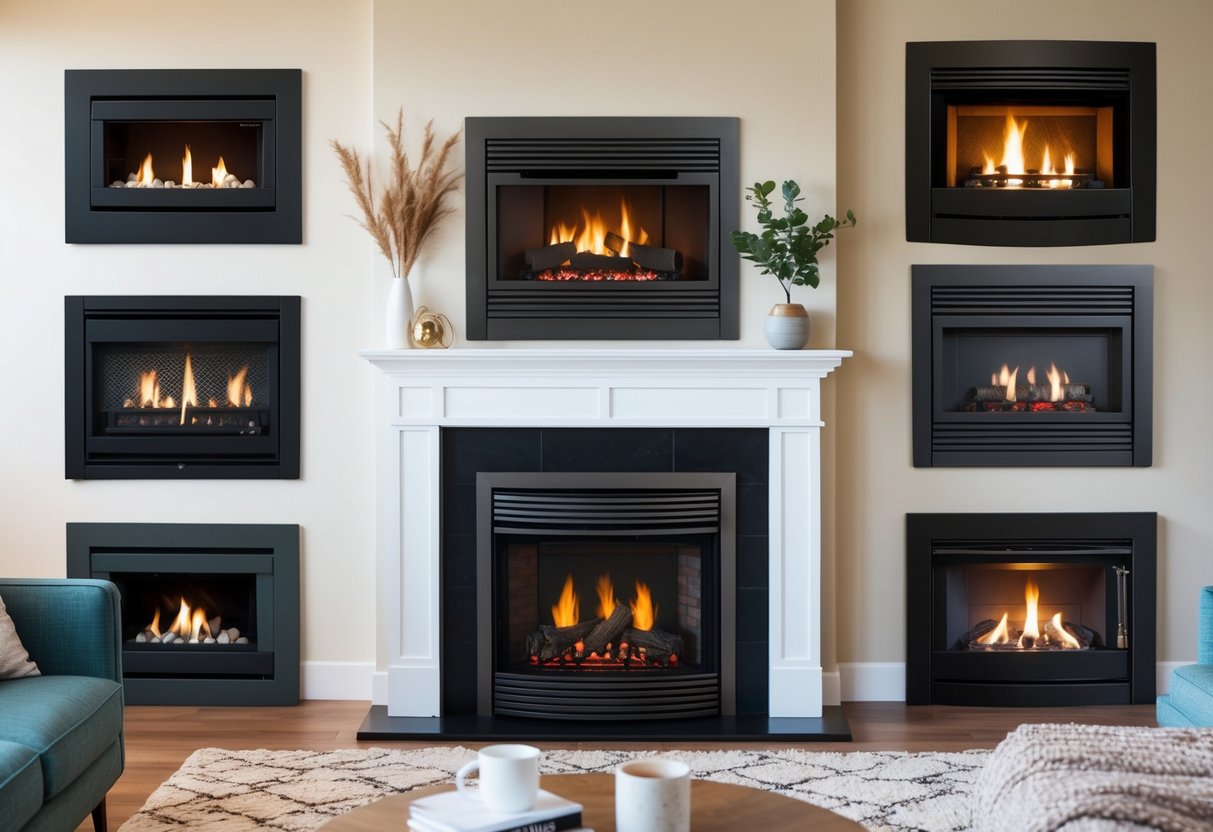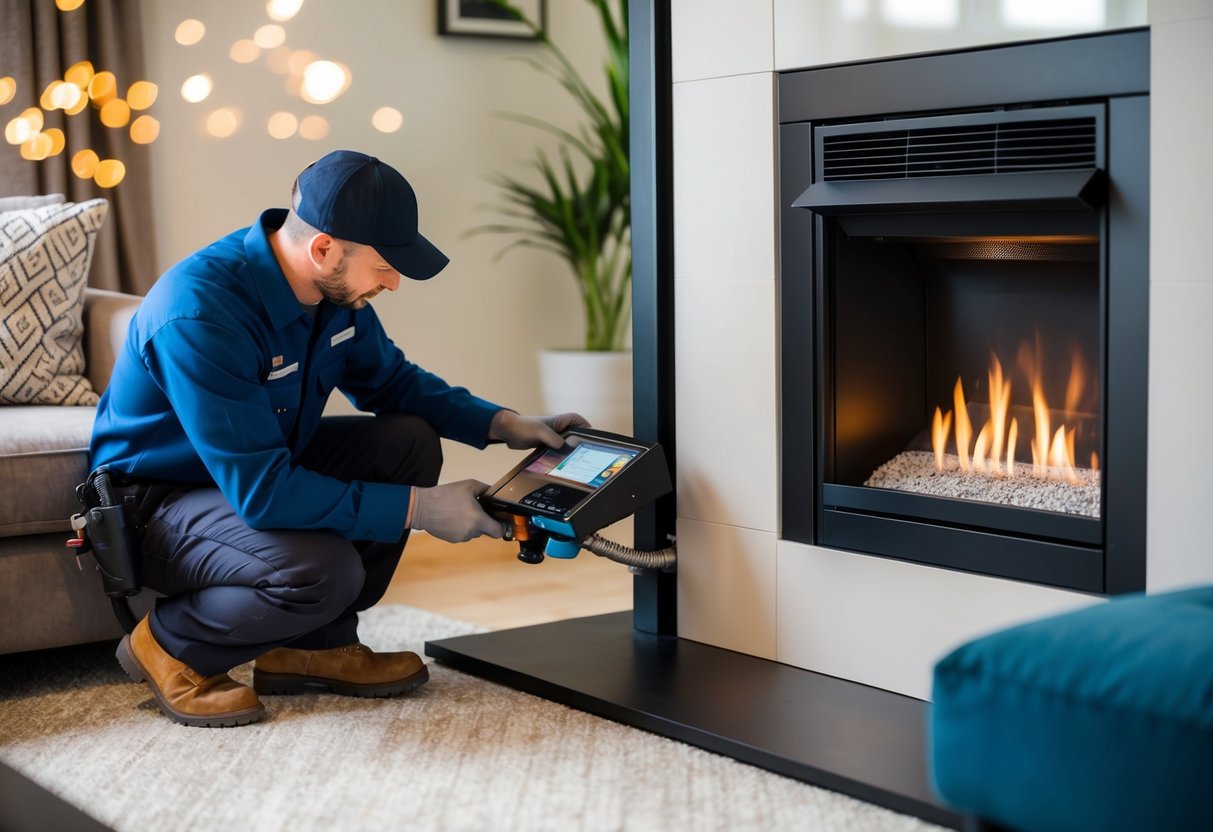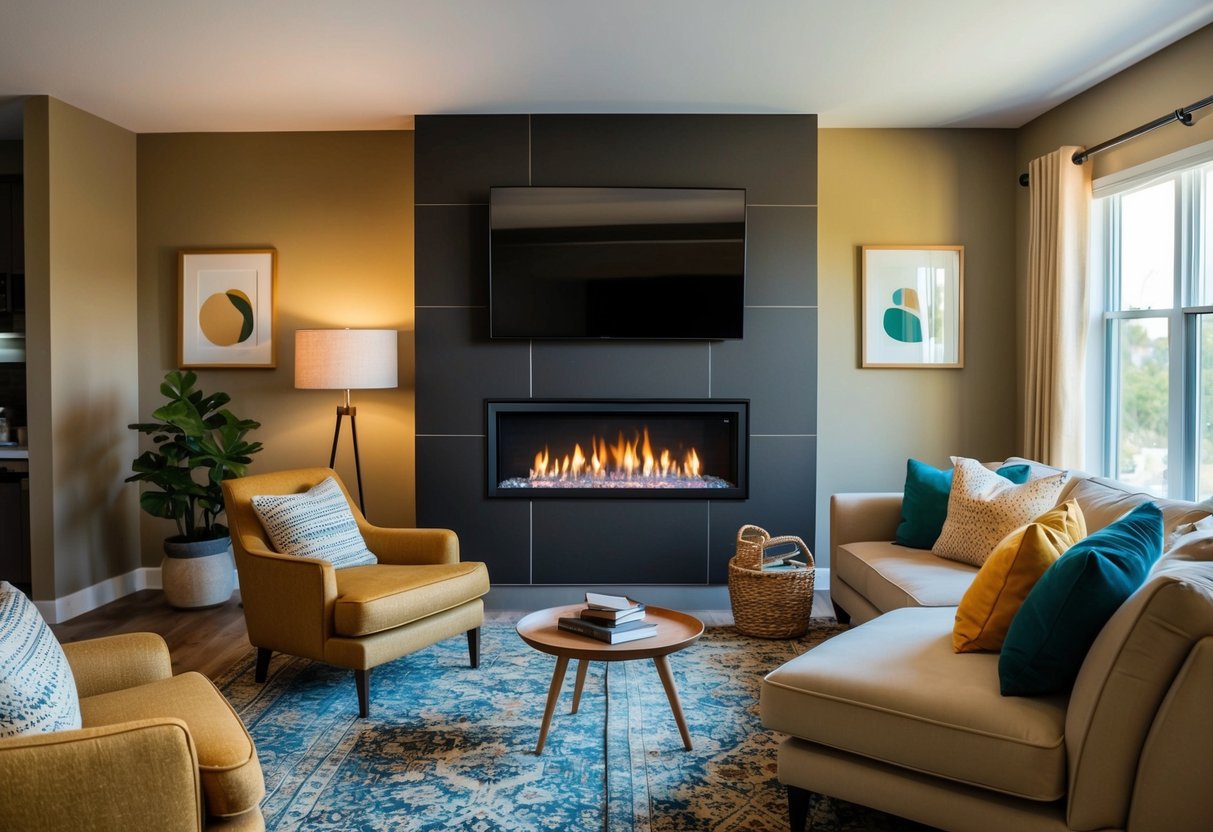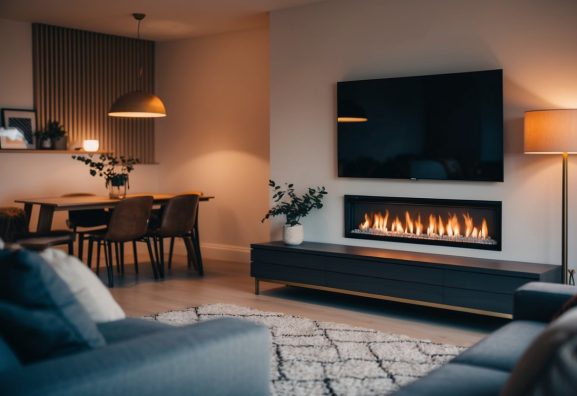Which Gas Fireplace Insert Is Best? Top Picks for 2024
Choosing the right gas fireplace insert can transform a living space with warmth and style. With various options available, including vented and ventless inserts, finding the best model involves considering your specific needs and the size of the area to be heated. The Duluth Forge Dual Fuel Ventless Gas Fireplace System with Mantle stands out for its versatility and design, offering an attractive combination of functionality and aesthetics.
Gas fireplace inserts vary in heating capacity, design, and features, making it essential to evaluate what best suits your home environment. Inserts like the Empire Tahoe are praised for their reliability and suitability for larger spaces. Given the diverse range of products, potential buyers should assess room size, design preferences, and fuel types.
The seamless integration of technology into modern gas fireplace inserts adds convenience and efficiency. Models like the Peterson Real Fyre offer realistic logs and customizable settings, increasing their appeal. With these considerations in mind, readers can navigate through the available options to select an insert that optimally balances function and style.
Key Takeaways
- Various insert types offer different heating capacities.
- Design and compatibility with home decor are crucial factors.
- Technological features enhance convenience and efficiency.
Types of Gas Fireplace Inserts

Gas fireplace inserts come in two main types: direct-vent and vent-free. Each type has its own features that cater to different installation requirements and heating efficiencies.
Direct-Vent Fireplace Inserts
Direct-vent fireplace inserts are enclosed systems that use outdoor air for combustion and expel fumes outside. They offer a balance of efficiency and safety. The sealed glass front prevents indoor air from escaping, maintaining energy efficiency.
Ideal for homes where ventilation is a priority, these inserts can use natural gas or propane. Direct-vent systems often have higher installation costs due to the venting infrastructure, but they ensure a consistent indoor air quality. This makes them a preferred choice for many homeowners seeking reliable heating without indoor air compromise.
Vent-Free Fireplace Inserts
Vent-free fireplace inserts, also known as ventless systems, operate without needing a chimney or flue. They burn gas efficiently enough that they release only minimal emissions, which are safe to emit directly into the room.
These systems are easier and cheaper to install, appealing to those with budget constraints. They can run on either natural gas or propane. Additionally, vent-free systems are often equipped with oxygen depletion sensors for safety, automatically turning off if oxygen levels fall below a safe threshold. However, due to their design, they are recommended for spacious and well-ventilated areas to prevent buildup of moisture or combustion by-products.
Design Considerations

When selecting a gas fireplace insert, understanding both material and build quality as well as aesthetic appeal is crucial. These elements influence the durability and overall fit within a space, contributing to both functionality and visual harmony.
Material and Build Quality
The choice of material impacts the performance and longevity of a gas fireplace insert. Cast iron is a popular material due to its durability and heat retention capabilities. It helps maintain warmth long after the fire has been turned off, making it energy-efficient.
Stainless steel and ceramic offer rust resistance and strength. Ceramic logs, in particular, are designed to withstand high temperatures and provide a realistic wood-burning look. Considering maintenance needs and resistance to wear can guide the choice of materials, ensuring a lasting investment.
Aesthetic Appeal
Aesthetic considerations revolve around how well an insert complements the existing decor. Inserts come in various styles ranging from traditional to contemporary designs, allowing flexibility in matching home interiors.
Realistic ceramic logs can enhance the visual appeal by mimicking the look of a traditional wood fire. The exterior finish, whether sleek modern lines or intricate detailing, should harmonize with the room’s design elements. Thoughtfully selecting an insert that aligns with personal taste and decor can transform a basic fireplace into a striking focal point.
Installation and Maintenance

Proper installation and regular maintenance are crucial for the optimal performance and safety of gas fireplace inserts. This includes ensuring adequate venting and routine checks to maintain efficiency.
Installation Requirements
Installing a gas fireplace insert involves several critical steps. Professional installation is often recommended due to the complexity. Venting plays a significant role; direct-vent and ventless units have different requirements that must be followed strictly.
For direct-vent units, they need a dual-chambered flue system to expel combustion gases while drawing in outdoor air. Ventless options are simpler but require careful placement to avoid air quality issues. Gas connections must be secure, often needing a licensed plumber to install correctly. Basic electric wiring may also be required for models with fans or electronic controls.
Ongoing Maintenance
Regular maintenance ensures longevity and safety for gas fireplace inserts. Owners should perform monthly checks on gas connections to spot any leaks, using a soap solution for detection. The glass doors should be cleaned biannually for clear visibility and prevent buildup.
It’s important to inspect the burner and ignition system annually, potentially involving a qualified technician. Replace batteries in remote controls and ensure the venting system is free of obstructions. For ventless units, ensure that room air quality is not compromised by monitoring carbon monoxide levels with detectors. Regular inspections will keep the system running smoothly, offering both safety and peak performance.
Features and Technology

Gas fireplace inserts offer a range of features that enhance efficiency, safety, and convenience. Their technology focuses on delivering optimal heat output while ensuring user safety through advanced mechanisms. Additional functionalities improve user experience and allow for customization.
Heat Output and Efficiency
Gas fireplace inserts are designed to provide efficient heating with specific BTU outputs. BTUs, or British Thermal Units, measure the heat produced. Models like the Empire Tahoe and Empire Boulevard can cater to different space requirements with outputs ranging from 20,000 to 46,000 BTUs.
Efficiency is achieved through direct-vent systems, which maximize heat use and reduce emissions. Select models feature adjustable flame height and thermostats for precise control over heat levels, enhancing comfort and energy savings.
Safety Mechanisms
Safety is paramount in gas fireplace inserts. These units often include an oxygen depletion sensor that monitors room oxygen levels, automatically shutting off the system if levels drop too low, preventing carbon monoxide buildup.
The automatic shut-off is crucial during power outages or malfunction. Piezo ignition systems provide reliable, spark-free starts, minimizing potential hazards. Some models incorporate safety screens to prevent direct contact with the hot glass fronts.
Additional Functionalities
Many gas fireplace inserts come with features for enhanced control and convenience. Remote controls allow users to adjust settings without manual intervention, offering options like flame height and heat level adjustments. This can also be managed through built-in thermostats, which maintain a consistent temperature.
Several models offer log sets for a realistic wood-burning appearance, adding aesthetic value. Additional features like fans or blowers distribute heat more effectively throughout the room, ensuring even warmth and improved ambiance.
Factors to Consider Before Buying

Selecting a gas fireplace insert requires careful consideration of several factors to ensure it suits the space and budget while offering warmth and convenience. Critical elements include size, cost-effectiveness, and potential long-term warranties.
Size and Space Compatibility
Choosing the right size for a gas fireplace insert is crucial. An appropriate fit ensures efficient heating and safety. The first step is measuring the current fireplace’s dimensions or the space available. Different inserts cater to various space requirements. A unit too small may not heat efficiently, while one that is too large could overwhelm the room’s aesthetics.
Room size plays a pivotal role. Larger rooms might require a more powerful insert to distribute heat evenly. Conversely, a smaller insert may suffice for compact spaces, maintaining optimal energy use. Convenience in terms of installation and maintenance is also linked to size. Therefore, a precise match with the room’s dimensions can enhance overall functionality.
Budget and Cost-Effectiveness
Budget considerations involve the purchase price and long-term operational costs. High-quality inserts may offer warranty packages that add to their attractiveness despite a higher initial price. Balancing upfront costs with long-term efficiency is key. Fuel efficiency, maintenance requirements, and durability affect overall cost-effectiveness.
Cheaper options might offer immediate savings but could lack features like realistic logs or advanced controls that enhance user experience. Investing in a model with reliable ignition systems, for instance, could reduce future expenses. Evaluating these factors ensures the chosen fireplace insert meets financial expectations without sacrificing necessary functions.
Frequently Asked Questions
Gas fireplace inserts offer various efficiency levels and can feature technologies such as blowers to enhance heating performance. Top-rated brands, heat output capabilities, and differences between modern and traditional inserts are discussed here to assist in making an informed decision.
What is the most efficient type of gas fireplace insert?
Direct-vent gas fireplace inserts are among the most efficient options available. They draw air from outside for combustion and expel gases back outdoors, ensuring no heat loss through the chimney. This design maximizes heat retention and improves energy efficiency in the home.
What are the top-rated brands for gas fireplace inserts?
Some of the top-rated brands include Empire, Montigo, and Duluth Forge. Empire is known for its efficient heating solutions, Montigo for their contemporary designs, and Duluth Forge for offering versatile fuel options. These brands provide a range of options to suit varying consumer needs and preferences.
How does a gas fireplace insert with a blower improve heating?
A blower in a gas fireplace insert circulates warm air throughout the room more effectively. It helps distribute heat evenly by pushing warm air into the living space rather than allowing it to rise naturally. This feature can make the room warm up faster and maintain a consistent temperature.
What features are important to consider when choosing a gas fireplace insert?
Key features to consider include the heating capacity measured in BTUs, fuel type (natural gas or propane), and venting options. Style and design aesthetics, compatibility with existing mantels, and additional features like remote controls or thermostats are also important to match functionality with personal taste.
How much heat output can you expect from a high-quality gas fireplace insert?
High-quality gas fireplace inserts can produce heat outputs ranging from 20,000 to 40,000 BTUs. This range is sufficient to heat spaces of various sizes effectively, depending on the efficiency of the insert and the insulation of the room or home in which it is installed.
In what ways do modern gas fireplace inserts differ from traditional ones?
Modern gas fireplace inserts often feature electronic ignition, remote controls, and smart home integration for ease of use. They may have a more streamlined appearance and vent-free designs. Traditional models generally have basic manual controls and are more dependent on existing structural elements like chimneys for installation.


